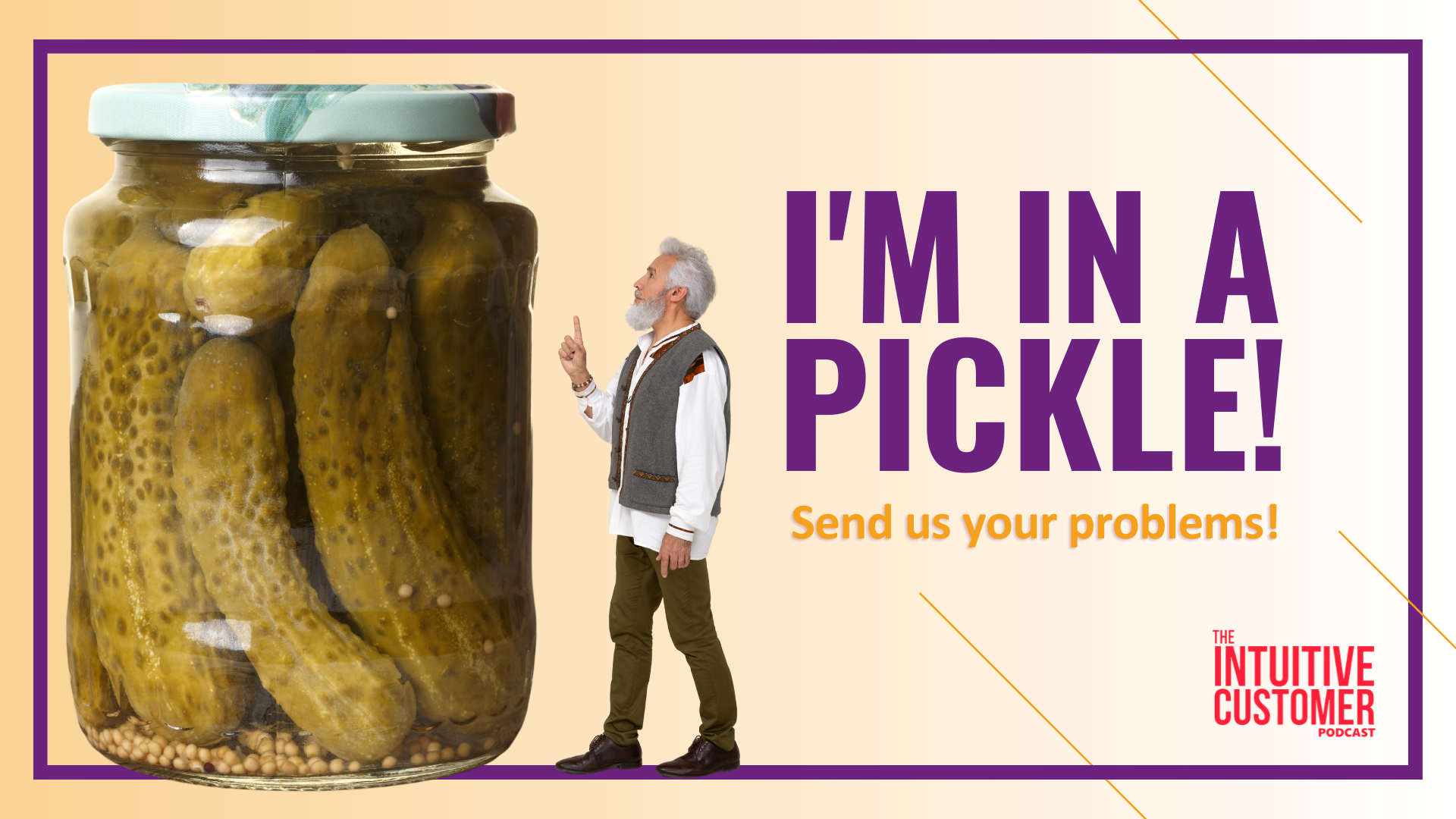Proactive is a key word for me for the future of experiences and customer strategy. Anticipating the needs of your customers is going to be the next level of exceeding their expectations. However, to be proactive, you need to add a new voice into the mix with the “Voice of the Customer (VoC).” It’s the “Voice of the Product (VoP),” and it can tell you a lot about what your customers want.
The VOP adds another data stream from a crucial part of a customer’s experience—using the product. With this data, organizations can anticipate and provide a proactive experience.
In a recent podcast, we hosted Tobias Goebel (@tpgoebel) Product Marketing Principal at Twilio IoT. Goebel recently wrote a great article, “It’s Time for the VoC to Get a Little Brother: The Voice of the Product,” that introduced me to the idea of the ‘Voice of the Product’. Goebel comes to us with nearly 20 years’ experience with enterprise software and a career of product management, sales engineering, and product marketing. Goebel describes himself as a technology solution evangelist with a passion for leveraging the potential for connecting the physical product world with the internet.
Goebel says “the Internet of Things (IoT) is at its heart about communication. IoT describes giving the physical objects in the world a voice so that things can tell us about themselves”. Goebel also believes that without giving those objects a voice, we are missing out on a significant constituent in the business-to-customer relationship. “Listening to the VoP can help organizations not only help their customers faster and more efficiently, particularly in the contact center (reducing call time, avoiding calls in the first place), but also become more competitive,” says Goebel.
IoT and Product Management for Experience Improvement
In the last few years, IoT technology has advanced. The software solutions and platforms exist to handle the interface, and cross-carrier cellular connectivity has become reliable. Also, the costs of sensors, modems, and connectivity have come down enough to make solutions affordable. IoT is now ready for a wider application in the physical product world.
 Goebel sees many benefits of adding this element to those who build products. However, he also sees sweeping implications for contact centers. “For example, an organization’s contact center agent could see on their screen data from the product when a customer calls or chats,” Goebel says.
Goebel sees many benefits of adding this element to those who build products. However, he also sees sweeping implications for contact centers. “For example, an organization’s contact center agent could see on their screen data from the product when a customer calls or chats,” Goebel says.
According to Goebel, there are a few benefits from connecting a product into an organization. First, it can make a company proactive for customers’ needs. Goebel says a common use case for IoT is to do predictive or proactive maintenance. In other words, monitoring the state and the condition of a product to know beforehand when it might break. “For example, when a product needs maintenance, it can alert the customer or suggest a replacement part it needs with a link to order it,” suggests Goebel “So, in other words, the product knows before the customer that it has an issue and helps the customer resolve the problem before it happens. This prevents inbound calls – an important goal for any contact center, which is still widely considered a cost center.”
Second, IoT can make it easier to act upon customer concerns. Because the product is connected, the call center agent should be able to pull up and have a frame in their agent desktop with data about not only the product, but also the connectivity itself (e.g.: Is there a cellular outage currently impacting the functionality of the product?). This data would reinforce or explain some of the issues the customer is having. Then, the agent can resolve the issue with more information than they would have had with the Voice of the Customer (VoC) alone. But not only that: having direct access to the VoP will also reduce call time, as “a log file often says more than a customer’s 1000 words.”
Finally, connecting a product into an organization allows companies to react. Companies could use the data from the VoP to do a historical analysis. The data could help manufacturers spot trends, understand usage in hindsight, and make educated decisions on how to improve product functionality or stability. Mingled with VoC data, the VoP provides a more informed view of what’s really going on.
Goebel’s interest in the VoP started when he had a mind-blowing experience with a connected mopping robot from iRobot. For a while, the appliance was working great and his kitchen’s hardwood floors had never looked better. Then, Goebel’s iRobot started acting up, so he called the contact center, an experience that he dreaded since he anticipated a long wait and cumbersome conversation. However, he was connected to a very knowledgeable agent, trained in the product. Then, she accessed the robot remotely and “listened” to it. Within a few seconds, she had identified the problem and pushed a software upgrade to the robot from her desktop. This example of a modern, digital native company that “gets it” and builds technology into their customer service was a fantastic experience, leaving Goebel wondering why other companies weren’t doing this, too.
Goebel doesn’t see the VoP replacing the VoC. “There is much insight that you can get from a VoC, even if it is biased or subjective. But the VoP provides another potential source of information that breaks through the bias and presents the facts”. Maybe it’s how often the customer uses the product, or how they use it. Perhaps the VoP shows a mistake on the user’s side that results in less than satisfying results that the company can address with customers. The opportunity to use the VoP for forward-looking insights that improve the product in ways the customer can’t articulate is new and interesting for the product space.
Psychology is aware of over 50 cognitive biases that influence what we do and how we think. For example, there is the Confirmation Bias, which describes the tendency to search for information in a way that supports a person’s preconceptions. Recency Bias, which describes how we give greater importance to events that happened most recently over things that happened a long time ago. Without realizing it, Goebel says, people distort memories.
However, products can’t do that. Technology is impartial—unless you program partiality into the algorithm, Goebel explains.
IoT gives organizations the opportunity to get closer to our customers. Many companies and enterprises out there are working on incorporating it into their customer strategy to stay competitive. Goebel says now is the time to make the right investment decisions and product and technology decisions to tap into the VoP, from products we sell to those we interact with and more.
For example, if you could make your office space talk, what would it tell you? Let’s say your management notices a decrease in productivity, and H.R. notices an increase in sick days. What if you learned from the connected office (VoP) that the air quality is showing an increased amount of specific chemicals. What if you also saw that those increases occurred in spaces with new furniture. Now, you can correlate that insight with what you’re noticing. By listening to the VoP, you hear what the office space can tell you to get to the root of the issue. Then, you can resolve the problem and prevent a loss of revenue resulting from a decrease in productivity.
So, What Should You DO with IoT to Facilitate VoP?
Goebel would encourage Customer Experience professionals to talk to product colleagues about the possibilities that come from connecting previously offline products and tieing that data stream directly into the contact center – not the product team alone. “By changing the processes, how you run the business, and who collaborates internally, any organization can tap into that potential of IoT technology, suggests Goebel.. He thinks customer teams should ask product teams how to incorporate the VoP into the design and communicate it to the customer-facing employees in the contact center. Often, the technical team knows what is possible; they just don’t always see why customer teams would want it.
Product-centered IoT also opens up some doors for experiences. The data streams are planned, so determining which sensors are going where and for what should be intentional. Moreover, where the data goes should be, too. Thinking in a forward-looking direction during product planning is essential to take full advantage of the proactive, active, and reactive benefits Goebel described.
Also, it will be essential to consider who will shoulder the cost of the innovations. If the IoT and VoP benefits are strictly for the customers, then it makes sense to charge a premium for them. However, if organizations determine that the reactive data is valuable enough to justify the upfront costs, then it should pay for these innovations. If it provides the ability to design better products in the future that provide improved Customer Experiences, then it makes sense not to charge customers for the full weight of those benefits. That then opens the possibility of making these products more affordable and increasing the size of the market opportunity. Moreover, it’s a competitive advantage and differentiation.
For my part, I would advise companies to start off by defining the experience that you’re trying to deliver to your customer. Then, using that as your basis, consider what you want the product to tell you that would help you deliver it. Building on what Goebel says, it would also be best to determine what information would you want your product to tell you about itself about its performance that could help the experience and customer strategy.
The VoP facilitated by the IoT is A-OK in our opinion. As the technology advances, it is going to become more common amongst consumer products, too. Perhaps most importantly, VoP can provide the insight we need to not only know what customers want now, but also what they will want next. Proactive experiences will be the best experiences and an essential part of customer strategy for the future.
So…why aren’t you listening to the Voice of Your Product?
If you have a business problem that you would like some help with, contact me on LinkedIn or submit your pickle here. We would be glad to hear from you and help you with your challenges.


